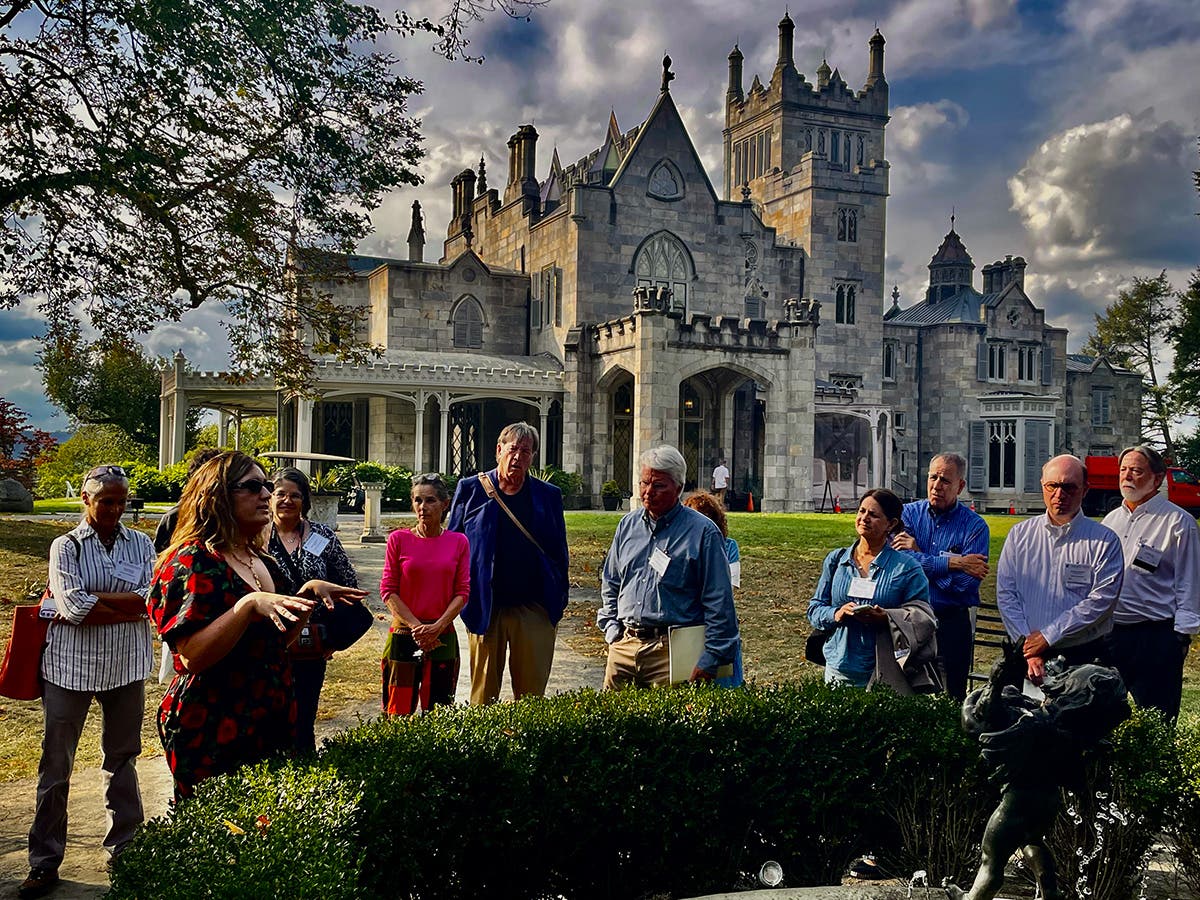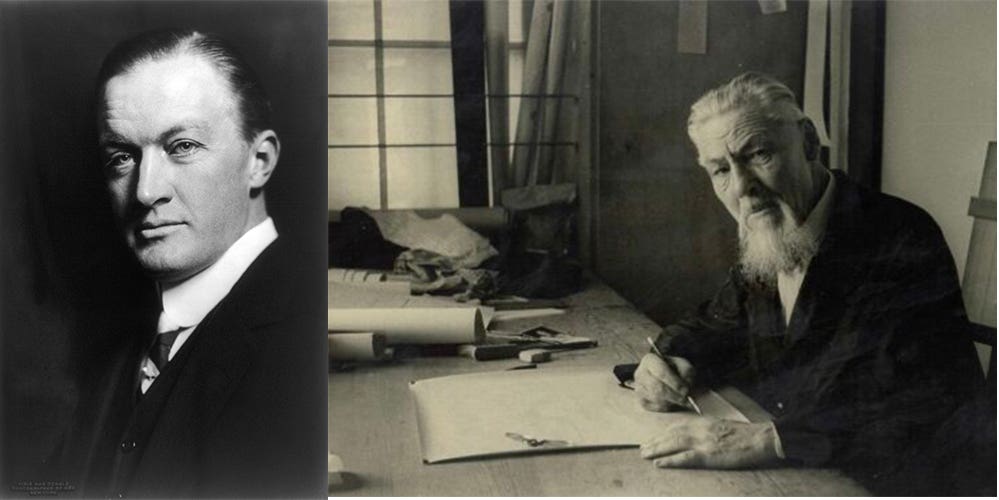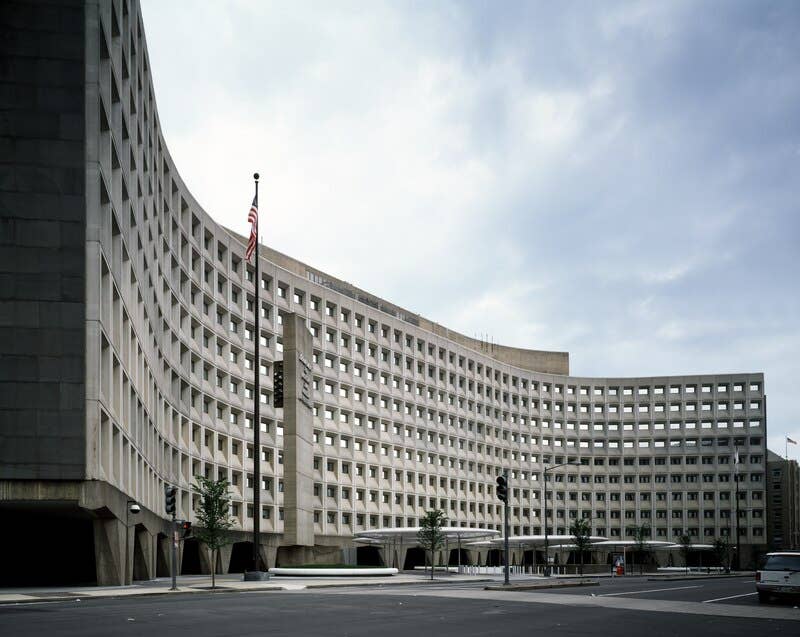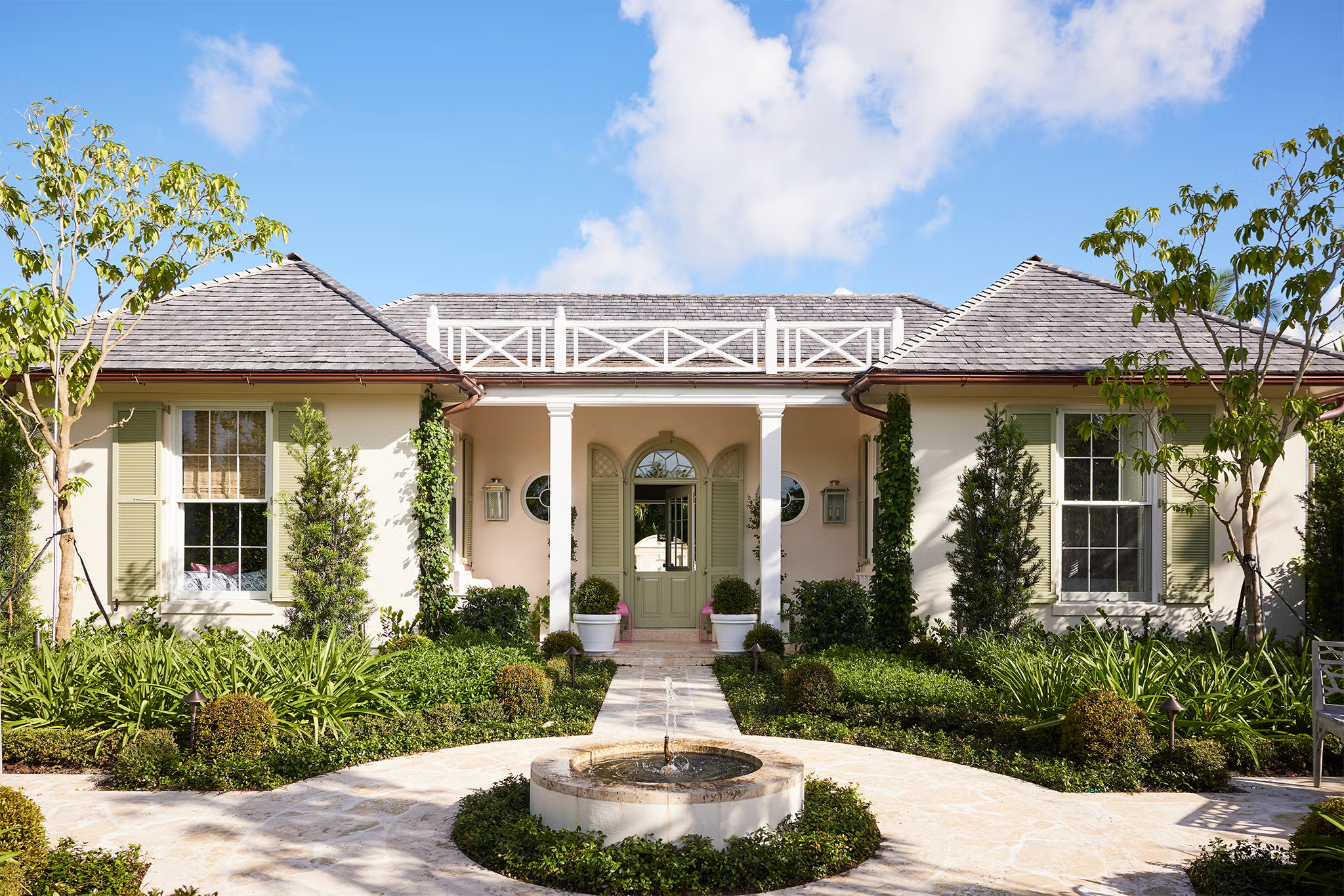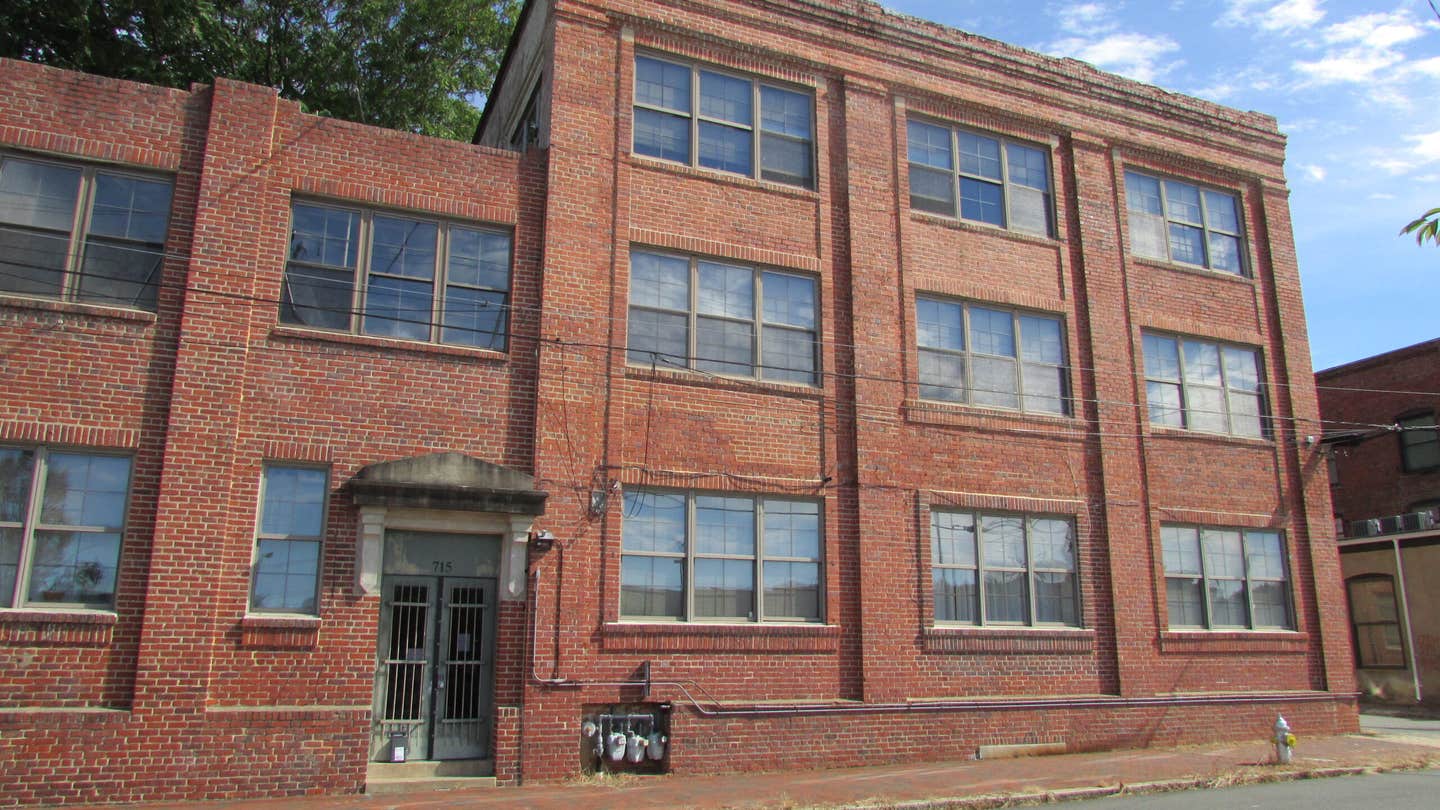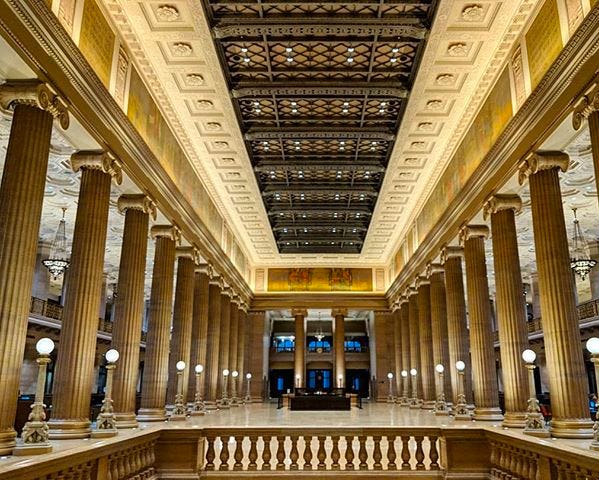
Peter Miller
The 2021 Acanthus Awards
Winners of the 2021 Acanthus Awards were announced at a ceremony hosted by the Institute of Classical Architecture & Art, Chicago-Midwest Chapter recently. There were nine awards given for excellence in classical design plus nine more recipients of the Chapter’s “Special Awards.”
Many of our readers think the regional ICAA design awards, almost all of which are named after famous architects, are produced by our magazine TRADITIONAL BUILDING. In fact, the ICAA’s awards are produced by the hard-working ICAA regional chapters. The national Palladio Awards are produced by TRADITIONAL BUILDING and presented in the magazine, on the magazine’s website, and at the Traditional Building Conference, December 1, 2021.
The Institute of Classical Architecture & Art’s mission is to “advance the appreciation and practice of the principals of traditional architecture and its allied arts by engaging educators, professionals, students, and enthusiasts”. The Acanthus Awards, as well as the John Russell Pope Awards (my blog last month) recognize exceptional classical work in the regions and anywhere in the world where chapter members practice.
How come the ICAA Chicago Midwest Chapter did not name their design awards program after a famous architect who shaped the city, like all the other ICAA Chapters? When considering Chicago architects, or those who helped shaped the city, chapter leaders were likely paralyzed by the multiplicity of choices: Mies Van der Rohe, Louis Sullivan, Daniel Burnham, Frank Lloyd Wright, Edward Burling, or David Adler? And who among these architects has the classical bona fides?
The Acanthus winners were in nine categories from Allied Arts and Craftsmanship to Interior Design, Landscape Design to Institutional/Commercial Architecture, Renovation/Adaptive Use, Preservation/Restoration, and Student Work. The “Special Awards bestowed included the Luminarts Architectural Fellowship and the Acanthus Award of Arete. A tribute to Richard H. Driehaus was also part of the ceremony.
The ceremony was held in the dramatic Great Banking Hall of the Wintrust Building in downtown Chicago. If Ionic columns are the hallmark of classicism, the Great Banking Hall, with its multi-story marble columns, was an appropriate venue.
The jury for the 2021 Acanthus Awards program were chosen from the Denver/Rocky Mountain Chapter of ICAA including that chapter’s President, Steve Ekman, Ekman Design Studio; Landscape Designer James Hyatt, James Hyatt Studio, and Ms. Ramsey Caulkins, Griffin (Interior) Design Source. Yours truly donned his tuxedo and presented the awards.
A panoramic mural, painted by Simes Studios Inc. for the dining room in the Illinois Governor’s mansion won the prize for Allied Arts and Craftsmanship. Using a milk-based tempera paint, Simes Studio’s mural depicts history and historical sites around the state, such as the first university, the train line, and state parks all laid out to follow true north, south, east, and west. The jury thought that the mural would certainly be “a great conversation piece” at state dinners.
In the competitive Interior Design category, “Gold Coast Luxury” by Jessica Lagrange Studios won the Acanthus. Lagrange remodeled an apartment in an iconic Art Deco building, using salvaged hardware from London, custom steel brass and glass doors, square brass inlays in the green terrazzo floor, crown molding, Venetian plaster on the ceilings, and walls upholstered with eggplant colored leather with studded nails. The jury was impressed by the way the interior designer “took cues from the Art Deco building to create something wholly personal and non-imitative.”
Hollander Design Landscape Architects won the award for Landscape Design with a Long Island, New York project which, with a new garden, knitted together two buildings on the property. Beds of flowering perennials helped define the spaces of this landscape which includes a pool, a dining terrace, and outdoor kitchen. “By taking a classical approach to this landscape design, the landscape architect exhibited a masterstroke of understatement,” exclaimed the jury.
The Advocates Law Office Building in Murray City Utah won the Acanthus trophy in the Institutional/Commercial category. Matthew McNicholas accepted the award for his firm McNicholas Architects. The jury admired the restraint exercised in the elevations of this project and thought the money, which was tight, was well spent, dispelling the misperception that classical design is too expensive. The brickwork on the exterior references Utah’s quirky and humble frontier dialect of classicism and an overlay of limestone detail speaks to the importance of the building’s purpose.
In the Renovation & Adaptive use category the winner is the McVay Center for Performing Arts at Principia College, by John Guenther, John Guenther Architect. This 325-seat theater is a building within a building. Its original use was as a gymnasium and school auditorium, called the Morely Field House, designed by Bernard Maybeck in 1936. The campus has Historic Landmark status. John Guenther preserved the original structure but adapted its interior use, getting the acoustics right, updating systems with hidden ductwork and designing a new orchestra pit.
For Ecclesiastic work the Acanthus award went to the prolific Duncan Stroik of Duncan Stroik Architects. The St. Augustine Cathedral in Kalamazoo Michigan was originally designed by Ralph Adams Cram, completed in 1951. Stroik’s recent renovation included a new elevated predella with marble and plaster baldacchino; this put renewed attention on the alter and tabernacle. A new marble sanctuary floor was also added, with curved steps and an inlay medallion of the coat of arms of the diocese set within a marble background. Symbols relating to the patron of the cathedral, Saint Augustine of hippo are repeated throughout the design and gold stars are applied to the stained wood ceiling bays of the sanctuary for added translucence.
The Bradley Symphony Center in Milwaukee Wisconsin won two Acanthus awards, the first, in the Preservation category and the second, the Acanthus Grand Prize. This project is the excellent work of Conrad Schmidt Studios. Originally this building was the Warner Grand Theater designed by Rapp and Papp and open to the public in 1931. After years of neglect and deterioration, the Milwaukee Symphony Orchestra hired Conrad Schmidt Studios to clean, conserve and repair the entertainment space. Murals, metalwork, and stone were cleaned. Exotic wood veneers reconstructed. The balcony face was recreated. The entire north wall of the stage was moved 35 feet to expand the stage depth, accommodate performances while retaining the historic character of the exterior wall. The jury called the Bradley Symphony Center an “amazing project informed by intelligent material investigation and historical research.”
Artisans and project managers, Maddie and Abigale Gruenke charmed the audience with their humility when accepting both these coveted awards.
The much-anticipated Student Awards acknowledged two Acanthus winners. The first was for the Student Design Project, won by Michael Bursch of the University of Notre Dame whose “Hindu Temple” design would stand as a beacon in stone for the city of Mumbai. This proposed project and drawing features a sequence of spaces in traditional styles, materials and geometric forms, appropriate for its setting.
The second Student Award went to Christian Johnson, also of Notre Dame. Christian’s Design Project Award was for his “New Bridge for Luang Prang” set in the ancient capital of Laos. This is an urban project combining French colonial and Lao architecture on a UNESCO World Heritage site. Christian Johnson’s proposed bridge creates a historic gateway from the Heritage site to the center of Luang Prabang, using a special sequence created by an ensemble of bridge and five buildings. Both Mr. Bursch and Mr. Johnson were on hand to accept their prize which includes a $2,000 honorarium.
After the Acanthus Awards presentations, the ICAA Chicago Midwest Chapter President, Mr. Scott Fortman of Gibbons Fortman Associates presented several special awards unique to his chapter, including:
The Tribute to Richard Driehaus was given to Mr. Chris Derrick and Mr. Rolf Achilles.
The Third Annual “Design Competition” was given to Stephen Siegle (first place); Andrew & Madeline Seago (second place) and Chris Sylva (third place).
The Luminarts Architectural Fellowship went to Marie Kruse 2021 Fellow.
The Acanthus Award of Arete for his long-time service to the ICAA and its mission to Mr. Gary Ainge.
From all of us at TRADITIONAL BUILDING and the Traditional Building Conference, congratulations to the 2021 Acanthus Award winners and to the Chicago Midwest ICAA special award winners.
Peter H. Miller, Hon. AIA, is the publisher and President of TRADITIONAL BUILDING, PERIOD HOMES and the Traditional Building Conference Series, and podcast host for Building Tradition, Active Interest Media's business to business media platform. AIM also publishes OLD HOUSE JOURNAL; NEW OLD HOUSE; FINE HOMEBUILDING; ARTS and CRAFTS HOMES; TIMBER HOME LIVING; ARTISAN HOMES; FINE GARDENING and HORTICULTURE. The Home Group integrated media portfolio serves over 50 million architects, builders, craftspeople, interior designers, building owners, homeowners and home buyers.
Pete lives in a classic Sears house, a Craftsman-style Four Square built in 1924, which he has lovingly restored over a period of 30 years. Resting on a bluff near the Potomac River in Washington, D.C., just four miles from the White House, Pete’s home is part of the Palisades neighborhood, which used to be a summer retreat for the District’s over-heated denizens.
Before joining Active Interest Media (AIM), Pete co-founded Restore Media in 2000 which was sold to AIM in 2012. Before this, Pete spent 17 years at trade publishing giant Hanley Wood, where he helped launch the Remodeling Show, the first trade conference and exhibition aimed at the business needs and interests of professional remodeling contractors. He was also publisher of Hanley Wood’s Remodeling, Custom Home, and Kitchen and Bath Showroom magazines and was the creator of Remodeling’s Big 50 Conference (now called the Leadership Conference).
Pete participates actively with the American Institute of Architects’ Historic Resources Committee and also serves as President of the Washington Mid Atlantic Chapter of the Institute of Classical Architecture & Art. He is a long-time member of the National Trust for Historic Preservation and an enthusiastic advocate for urbanism, the revitalization of historic neighborhoods and the benefits of sustainability, including the adaptive reuse of historic buildings.




